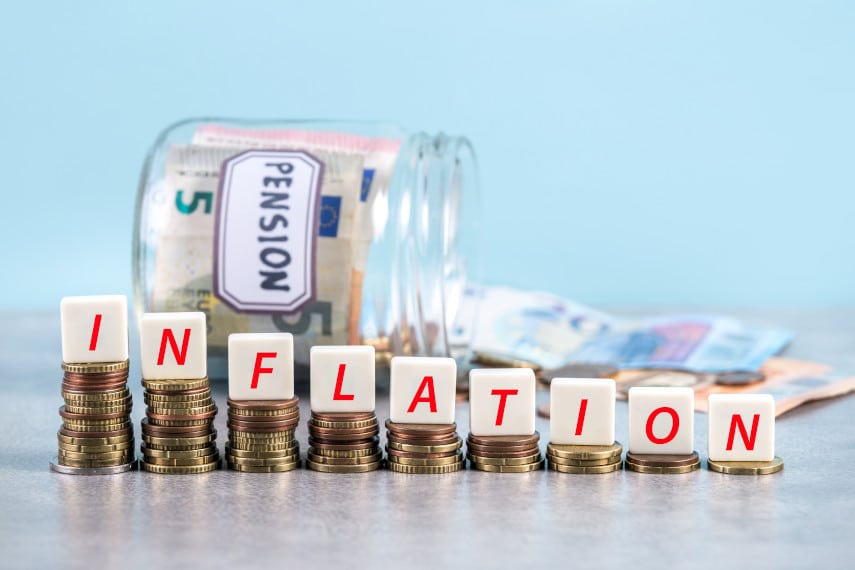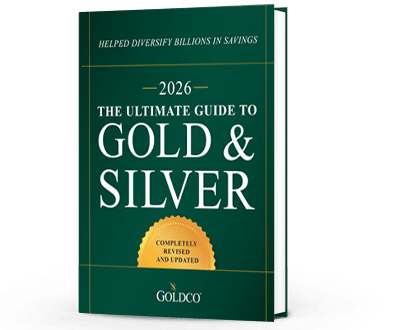6 Indicators of a Potential Recession
It seems that in the media today there are more and more mentions of the dreaded R-word: recession With growing economic uncertainty, the threat of potential recession seems to be growing as...
Economy

Over the past few years, there has probably been no financial topic more widely discussed than inflation. It’s a problem that has impacted every American household, and has impacted the standard of living of every American.
Most Americans don’t know what inflation is, what causes it, or in some cases even what all of its effects are. But they’re still forced to deal with its consequences.
The rises in prices of consumer goods and services that have occurred over the past few years have made things a lot more expensive for a great many people. And while some people have managed to keep ahead of inflation, many others have lost ground to it.
That’s especially true for those in retirement or on fixed incomes, but anyone whose income hasn’t kept pace with inflation has suffered from the post-2020 inflationary spike.
With the most recent consumer price index (CPI) release indicating that the official inflation rate has fallen back to 3% year on year, there is renewed hope that the Fed maybe, just maybe, is starting to get inflation under control.
But is that really the case? Or what is inflation really trying to tell us?
It’s important to distinguish between the original definition of inflation and the modern definition of inflation. Traditionally, inflation was defined as an increase in the money supply. The effect of inflation, all other things being equal, was higher prices.
Today, that original definition of inflation has been all but forgotten, and the effects of inflation are now conflated with inflation itself. So when most financial commentators discuss inflation, they’re talking about the general increase in prices across the economy.
Even though cause and effect have become confused, the general rise in prices that is now described as inflation still has its roots in money creation. And as more and more money has been created over the past several years, prices throughout the economy have continued to rise.
One of the problems with defining inflation as a general rise in the price level rather than an increase in money supply, is that of defining the price level. What are the prices that are being measured?
Inflation works its way through the economy over time, and not all goods and services are affected at the same rate and at the same time. First it may be gas that rises, then food, and finally medical care.
That means that inflation affects different people differently. Government statisticians have tried to create different measures of inflation to provide a more granular picture of what is happening, although it’s still imperfect.
But there are three measures of inflation that policymakers generally look at: CPI, PPI, and PCE.
CPI is the consumer price index, the index that tracks consumer prices. PPI is the producer price index, the index that tracks the prices manufacturers pay. And PCE is personal consumption expenditures, the amount of total spending by consumers.
Most of us focus on CPI, because those are supposed to be the prices that impact us the most. But the Fed often prefers to focus elsewhere.
PPI is important because it shows what producers are paying, and since most producer costs are eventually passed on to consumers, it should indicate what consumers are likely going to start paying.
Right now PPI is increasing while CPI is decreasing, with the annual PPI rate of inflation rising at the fastest rate since March 2023. So that’s a little confusing, with PPI rising while CPI is falling.
Then you have PCE, which some say is the Federal Reserve’s preferred measure of inflation. That’s currently increasing at a rate of 2.6% year on year. But if you were to compare PCE to CPI, PCE is losing ground, which would seem to indicate that real inflation-adjusted expenditures are actually decreasing.
First, consumption seems to be slowing down, meaning that the consumer spending which drives the economy is losing steam. PCE didn’t start falling during the 2008 crisis until well after the recession had actually started, so don’t expect PCE to predict a recession.
If the Fed is actually relying on PCE as one of their data points to start cutting rates, there’s a very good chance that it won’t fall until recession starts, and the Fed will end up being behind the curve.
The other problem is that PPI and CPI seem to be moving in opposite directions. With no clarity, therefore, on inflation direction, and with CPI still not under 3% and nowhere close to remaining at a steady 2%, it would seem that the Fed’s 2% target is still not in reach.
So while financial markets are viewing the latest CPI data as being beneficial to the argument for a Fed rate cut, the reality is that the totality of inflation data is far more nuanced and doesn’t present a clear picture of which way prices are really going.
What this means for most Americans is that they aren’t going to be able to trust the Fed to get it right on inflation. With inflation figures showing no real consistency, don’t expect the Fed to judge things correctly or react correctly.
This means that inflation is likely to remain elevated for months to come. And if the Fed thinks it is out of the woods on inflation, and begins to cut rates too early, it could risk shooting inflation back up even higher.
If you haven’t already taken steps to try to protect your financial well-being against inflation, it’s not too late. Inflation could remain problematic for months or even years to come.
Many Americans have already protected themselves and their financial security with precious metals like gold and silver. Both gold and silver have reputations as inflation hedges and safe haven assets.
During the stagflation of the 1970s, for instance, both gold and silver had annualized rates of growth of over 30% per year over the course of the decade, far outpacing inflation. And many gold and silver owners today hope that gold and silver might repeat that kind of performance if inflation becomes entrenched.
If you’re worried about inflation, recession, and other threats to your hard-earned savings, now is the time to prepare if you haven’t already. Whether you want to use a gold IRA or silver IRA to project your tax-advantaged retirement savings, or a direct cash purchase to enable you to store gold and silver at home, there are numerous ways to benefit from owning gold and silver.
Goldco has helped thousands of Americans safeguard their financial well-being with gold and silver. With over $2.5 billion in precious metals placements and over 6,000 5-star reviews, we pride ourselves on being one of the best gold companies in the business.
Call Goldco today to learn more about how you can help put gold and silver to use in protecting your dreams of financial security.

